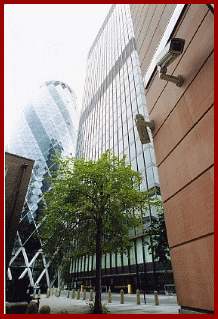| ||||||||||||||||||||||||||||||
Welcome to the | ||||||||||||||||||||||||||||||
 | ||||||||||||||||||||||||||||||
 | ||||||||||||||||||||||||||||||
The complete A to Z ... | ||||||||||||||||||||||||||||||
Mains electric video transmission equipment is quite pricey (Doktor Jon has resisted the temptation to say ‘shocking’), and it has to be said rather difficult to obtain, but you never know, it may just be exactly what you’re looking for when you least expect it. Perhaps the biggest problem with any highly sensitive Closed Circuit TV system, particularly if using wireless transmission equipment, is maintaining it as a ‘closed circuit’ and preventing either accidental or deliberate ‘eavesdropping’ of vulnerable or critical cameras. Tapping in to most camera installations is not particularly difficult for anyone with a modicum of engineering knowledge, but there is one technique which significantly reduces the risk to a systems integrity. Using a video scrambler or ‘codec’, the signal from any source (usually a key camera such as a covertly installed unit) can be totally deconstructed, rendering it impossible to reproduce without an appropriately coded ‘descrambler’. The codec units are effectively bi functional, offering the option of coding or decoding in the same unit, depending on how the external programming switches have been set up. With this type of arrangement, highly sensitive links, including of course video conferencing applications, can be further secured to make sure any material of a confidential nature, remains just that. The bottom line with any transmission option, is it has to be the most appropriate for any given situation. In practice, it may be quite likely that two or even three different techniques are used, simply to bring the pictures home. In a commercial environment, copper cable could feed the camera signal to a laserlink, and on the other side of the road, another copper cable links the receiver to a fibre optic transmitter, with yet more copper linking the receiver to the monitor ..... and that’s just a very simple example!! To get the best out of all the various transmission options, you do really need to have a reasonable understanding, not so much of the benefits, but more importantly the weaknesses. | ||||||||||||||||||||||||||||||
 | ||||||||||||||||||||||||||||||
IMPORTANT: No material may be reproduced, copied or redistributed from this site, © doktorjon.co.uk 2004 - 2008 Homepage...:...Gateway...:...Technical Gateway....:....Quickfind Index....:....Equipment Directory | ||||||||||||||||||||||||||||||

